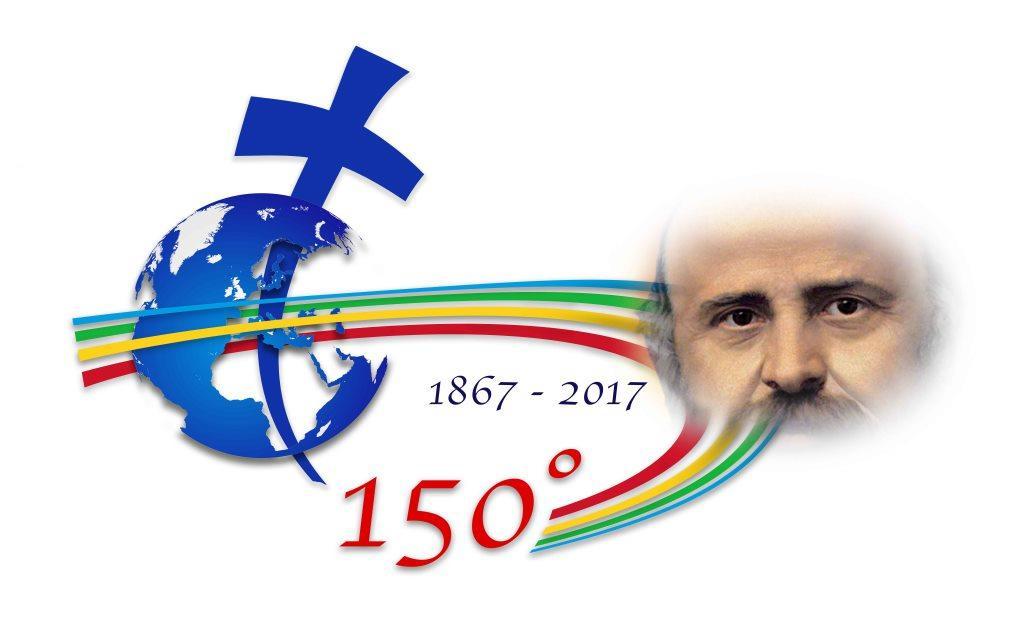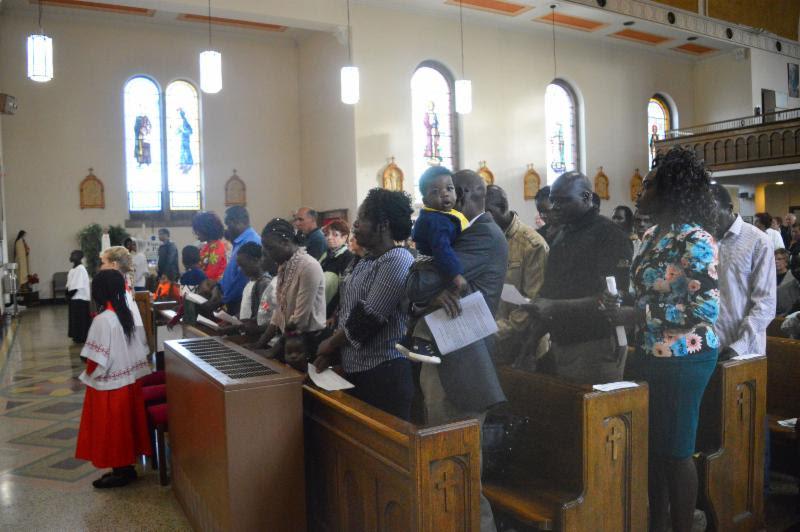Daniel Comboni
Comboni Missionaries
Institutional area
Other links
Newsletter
Thursday, March 9, 2017
“The Comboni Institute was born without any great support, not only in the midst of contradictions but even with devious opposition… Started in 1867 as part of a missionary Work (the Work of the Good Shepherd, understood in the broad sense by Comboni) – writes Fr. Fidel González Fernández, Comboni missionary –, it slowly developed, through different stages, until 1885, after the death of Comboni, and then, with the help of the Jesuits who were called by Comboni’s immediate successor, Msgr. Sogaro, there began the transformation of that budding Institute into one with a canonical religious physiognomy, according to the as yet poorly defined canonical modules of the time.”
THE COMBONI INSTITUTE FOR THE AFRICAN MISSIONS
IN ITS FIRST “SECULAR” PHASE”
(Part two)
The third phase of this process begins in 1885, four years after the death of Comboni, with the canonical transformation of the Comboni Institute or Seminary for the African Missions in Verona, in Cairo and Sudan into a religious congregation in the legal sense that the term was acquiring. This took place due to the work of Comboni’s successor as Vicar Apostolic of Central Africa, Msgr. Francesco Sogaro, and with the cooperation of some Jesuits requested by him from the Provincial of the Lombardy-Venice Province of the Company of Jesus. This transformation would take place according to the manner that was characteristic of the new religious congregations of the latter part of the XIX century, including in the life of the young Institute many practices and rules of the Company itself as they were lived at that time. In fact, the Jesuits transformed the Comboni Seminary or Institute into a religious congregation giving it the characteristics of the Jesuit spirituality of the “restoration” and concrete legal forms in all departments (legal organisation, the formation of the members, internal life, the taking of simple vows of belonging to the congregation…).
Some members in formation at the African Missions Seminary of Verona began the novitiate in the Jesuit style. There were seminarians, Brothers and a priest in formation who had just joined, by the name of Antonio Roveggio, but not one missionary in either Africa or Europe agreed to participate, at first, in any such transformation. The novices eventually took the three religious vows that, at that time, were simple and private. For this reason, they could not, strictly speaking, be considered religious until the changes to Canon Law made by Leo XIII in 1900, and the subsequent canonical codification that would form part of the Codex in 1917. In this way the so-called “religious congregationalism” structure triumphed, even if, until the above-mentioned changes, they were not legally recognised as such[1]. Many Institutes set up in the XIX century and previously, would, with different modalities, follow this path. With the promulgation of the new Code of Canon Law (CIC) in 1917, they had to choose one of the canonically recognised forms: either that of apostolic societies of common life or that of the religious congregations as in the current sense.
Most societies that had private vows or a similar oath opted for religious life structured according to the new Code. Simple vows were recognised as public by canon 488. The new canonical legislation, practically speaking, rendered all the new congregations canonically similar. It unified their forms of government, their obligations, their formation course and also their rules, reducing differences to what was considered strictly necessary.
Instead, the societies that opted to continue to be of common life, without canonical vows, were better able to preserve their own physiognomy. Later, some of them decided to become religious congregations in line with the 1917 CIC.
What has been said above helps to understand the absence of Comboni or any explicit reference to him and his missionary charism in the Rules of the Institute of the Sons of the Sacred Heart of Jesus. We must remember that explicit references to Comboni during the troubled years of the religious “transformation” (1885-1895) are often polemical, especially those by Msgr. Sogaro, who used them to support his theses[2].
There is no doubt that the new Canonical legislation which, only with difficulty, came into force throughout the XIX century, favoured the recognition of the fact that consecrated and religious life existed in those groups but, at the same time, marked considerable impoverishment with regard to the originality and vitality that each one of them could have brought to the Church and its apostolic works. These historical data demonstrate the logic of the dependence of the missionary Institutes on Propaganda and the lack of a historical vision at the time of their transfer to the jurisdiction of the Congregation for Religious (1989), which showed how Propaganda ignored the exact history and the ecclesial roots of such Institutes.
At any rate, the similarity between the societies of apostolic life and the institutes of consecrated life is evidenced by the CIC itself with its continual reference to the canons that support this particular kind of life which shows, once again, the practically similar forms of life which, on the one hand, come from the same ecclesial experience, on the other hand show how, in the history of the Church, the new forms of life in common and of consecrated life do not always succeed in reflecting new needs but, rather, somewhat outdated canonical schemes following categories chosen for different circumstances. The case of the Comboni Institute shows this clearly and allows us, at the same time, to see that the norms established by the CIC were not entirely demonstrably fortuitous.
“Of lowly birth”
This is the ecclesial context in which the Institute of the Comboni Missionaries was born. Some of the above-mentioned missionary Institutes were born from a petition expressed by an episcopate (as in the case of the Milanese Missionary Institute PIME)[3]. Very different were the almost inexistent backing of the Comboni Work born in the tribulations that would accompany it for the first fifty years of its history. The Comboni Institute was born without any great support, not only in the midst of contradictions but even with devious opposition. A Superior General of the Comboni Institute would write in 1910: “I will not spend much time, my dear confreres, in reminding you of the history of our Institute: you already know it. It is enough for me here to remind you that, like all the works of God, it was of lowly birth and tempestuous infancy”[4]. This judgement, belonging to the time of the religious “transformation” (1885), may be applied to the origins of the first Comboni Foundation of the Institute or Seminary for the African Missions of 1867.
The only support Comboni could have had was that of the Mazza Institute to which he still belonged. However, not only did this support fail to materialise, it turned to heedless opposition to his plans. Comboni set up his Seminary for the African missions with the formal approval of the Bishop of Verona, Luigi di Canossa, and the support of a Roman Monsignor who soon became a fierce opponent[5]. Comboni had founded that Seminary, in June, 1867, in the context of a work of broader missionary cooperation, l’Opera del Buon Pastore. Within it, mission promotion and the support given by clergy and laity to missionary work were given great importance. The Italian bishops welcomed it favourably but, a short time afterwards, Propaganda forbade the work because of a misunderstanding, considering it disadvantageous to the existing works of Lyons and Paris. A year after the opening of the African Seminary, its first rector, Alessandro dal Bosco died (at the end of 1868), and Comboni found it hard to find a suitable replacement. The newly-born Institute for the African Missions, presented to Propaganda as a work without a future, finds itself apparently abandoned by all and in a precarious situation having just the formal approval of the Bishop of Verona and the good wishes of Propaganda. In such a situation, one can understand what Comboni said to the Veronese bishop in October 1867: “The rejection, the battles, the crosses all show how our Work is entirely God’s”[6].
Besides these difficulties there were also others: Comboni had no seat for his missionary Seminary nor the money to purchase one, nor a consistent and trustworthy group of priests to go along with his work, nor the support of the episcopate, not even that of Venice. He could count only on himself, on the rector (who – as we have said – would die a year later), on the names of some secular priests, or some exclaustrated Camillian religious who adhered to his new Work, on some French Sisters and some African boys and girls (former slaves).
In the history of the origins of many Works, missionary and religious institutes, we find the figure of a Founder and a company of friends and disciples who follow him closely. The Founder is the catalyst of the company. In the history of the Comboni foundation, alongside the strong personality of Comboni, in the beginning, there was the absence of the figures of true disciples who saw themselves also as sons and so form a strong company, motivated by a clear sense of belonging and fidelity. This was something that would come into being gradually, especially at the moment of his death. This was why it had been a crucial problem for Comboni to find a suitable rector-collaborator for his African Seminary and this problem would follow him through to his death. The first two people he wanted to place at the head of his Seminary, Dal Bosco and Antonio Squaranti, died one after the other. In thirteen years, he had to find as many as four rectors, one of whom would abandon the Seminary after only two years as rector. Therefore, Comboni lacked permanent collaborators who would fully share his experience and his ardent missionary ideals.
Another difficulty was the immense field of work that Propaganda had entrusted to the new Seminary-Institute right from its beginnings: the Mission of Central Africa. That lethal mission reaped many victims from among the members of the new Institute, preventing it from developing sufficiently and from giving its members an adequate formation through the assiduous assistance of the Founder who had to reside in Africa as the ecclesiastical superior and could only occasionally travel to Europe for mission promotion.
To all these there were added the difficulties, after the death of Comboni, of the decisions of the Congress of Berlin (1884-85) which seriously restricted what the Institute could do.
For all these reasons, many considered the foundational idea of Daniel Comboni to be sheer madness. Even some years after the foundation, the reduced number of missionaries, their sometimes insufficient formation, the continual deaths, the enormous difficulties found in that mission (the culmination of which would be its almost entire destruction and the imprisonment of the majority of its missionaries by the Moslem Mahdi forces), showed the great disproportion between the demands of that undertaking and what the tiny Institute could provide.
In this context it is easy to understand the continual supplications Comboni addressed to all his friends that they should pray for that Work and his marked insistence on the experience of the Pascal Mystery, which dominates all the life of Comboni, especially when the time of his death was approaching. To Msgr. Marinoni, director of the Milanese Missionary Institute Comboni wrote: “The cross is the one true comfort because it is the hallmark of the Work of God. After the Passion and Death of Jesus Christ, the Resurrection took place. The same will happen with Central Africa”[7].
Concerning this historical phase of the Institute for the African Missions, we note that its foundation lies within the framework of the history of the Missionary Movement under the direction of Propaganda Fide and that its growth was arduous and its transformation slow. In February of 1872, Comboni was able to present to Propaganda Fide the documentation regarding his planned missionary Institute. In his report, there is a letter from the bishop of Verona, Msgr. Di Canossa. In it he explicitly asks Propaganda “to grant to the institute of Verona for Africa its own particular mission in the region of Central Africa”[8].
Started in 1867 as part of a missionary Work (the Work of the Good Shepherd, understood in the broad sense by Comboni), it slowly developed, through different stages, until 1885, after the death of Comboni, and then, with the help of the Jesuits who were called by Comboni’s immediate successor, Msgr. Sogaro, there began the transformation of that budding Institute into one with a canonical religious physiognomy, according to the as yet poorly defined canonical modules of the time.
Conclusion
These notes offer simply some historical pointers[9]. At this stage we may ask ourselves: what is the root of these movements and the missionary foundations that sprang from them? An adequate answer should be sought among the gifts God gave to his Church in this troubled historical period. They were a hasty answer to the various needs of the time. One must also take into account the social and cultural environment in which they came into being, were nourished and lived.
Dedication to the practice of charity, works of mercy, the struggle against the slave trade and missionary activity are expressions of the experiences of grace mentioned above, conveyed according to the cultural modalities of the historical moment. It is a matter of participating in the Mystery of Christ, source of principles of ecclesial and social action that are always manifested in a precise humanity. The gifts of grace granted to the founders of these initiatives, as well as the Christian experience welling up from them, determine the foundations and configure their ecclesial physiognomy, the outlines of Christian experience and the style of the Christian communities that spring up in the new mission territories[10].
Fr. Fidel González, mccj
[1] During the time when church law recognised as religious only the Orders with solemn vows, the Holy See, throughout the XX century, reluctantly approved the “Religious congregations” with simple vows, but continued to affirm that they were not “Religious congregations, strictly speaking”. The Constitution Conditae a Christo of Leo XIII in 1900 and the Norms of the Congregation for bishops and regulars in 1901 adapted Canon Law to consecrated life, recognising as religious Congregations with simple vows.
[2] Such things happen frequently in the history of religious Institutes.
[3] Cf. C. Suigo, “Pio IX e la fondazione del primo Istituto missionario italiano a Milano”, in Pio IX, IV, 1 (1975), pp. 28-80; IV, 3 (1975), pp. 327-375; V, 1 (1976), pp. 51-87.
[4] “Circular from Rev.mo Fr. Federico Vianello, dated 16 July 1910, on the 25th anniversary of the transformations of the Institute for the African Missions into thee Religious Congregation of the Sons of the Sacred Heart”, in La Voce della Congregazione, Verona 1957, p. 32.
[5] Msgr. Castellacci, vice-regent in Rome. He opposed Comboni when he refused to follow the strange revelations (shown to be false) of a nun supported by Msgr. Castellacci, and the plans of the latter which totally misrepresented Comboni’s foundation. Cf. A. Capovilla, “Don Daniele Comboni e Msgr. Pietro Castellacci”, in AC, XIV, 2 (1976), pp. 115-174.
[6] Cf. Comboni to Canossa, from Verona, on 4.10.1867, in ACR, sec. A, c. 14/41.
[7] Cf. Comboni to Msgr. Marinoni, from Khartoum, on 23.1.1879, in APIME, vol. 28, pp. 15-30.
[8] Letter from Canossa to Pio IX del 1.2.1872, in APF, SCOG, V. 999, 507r-508r; Cf. in D.C. Positio, vol. I, Doc. XIV, 1, a, pp. 606-608. Cf. Comboni to the Society of Cologne, in Jahresbericht... Köln, 24 (1877), pp. 23-24.
e[9] Cf. The documented discussion of the history of the Comboni Institute in: F. González, Comboni en el corazón de la Misión Africana. El Movimiento misionero y la Obra comboniana:1846-1910, Madrid 1993, chap. VI-XII.
10 An examination of the numerous Causes of canonisation of founders and foundresses of this epoch show some common points: 1) sensitivity to the dramas of the epoch; 2) a firm resolution to consecrate oneself to finding a response to that problematic; 3) companies of men and women who want to dedicate themselves to that end come into being; 4) they form companies, often seeking the approval – granted only with difficulty – of the diocesan bishop and of Rome; 5) they do not obtain legal recognition according to the canon law of the epoch because of the lack of precise dispositions; they would have to wait until experience slowly progressed until the time of Popes Leo XIII and Benedict XV (Conditae a Christo, of 1900 and CIC of 1917).




